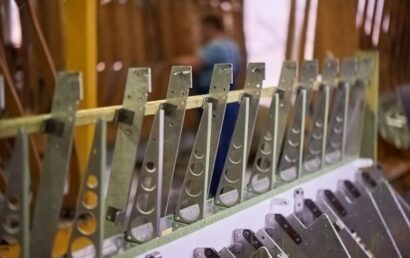Can You Apply Graphene on Top of Ceramic Coating?
Questions like “Can you put graphene over ceramic coating?” have become increasingly common as both materials gain popularity in protective surface technology. Ceramic coatings are already trusted for durability and long-lasting shine, while graphene is often praised for its slickness and water-repelling properties. Many wonder whether combining them could amplify performance. The truth depends on how each coating interacts at a molecular level. When done correctly, layering graphene on a ceramic surface can lead to enhanced protection, smoother finishes, and longer-lasting results.
Understanding Ceramic and Graphene Coatings
Ceramic coatings are made from silicon dioxide, forming a transparent and extremely durable layer that bonds tightly with the substrate. This layer resists scratches, corrosion, and chemical wear, making it ideal for industrial and automotive applications. Graphene coatings, on the other hand, use a carbon-based compound known for strength and conductivity. When applied to a surface, graphene adds slickness and improves water spot resistance. Both coatings aim to protect and enhance surfaces, yet their properties differ. Ceramic coatings provide hardness and endurance, while graphene brings advanced hydrophobic and anti-static qualities that help maintain cleaner surfaces with less frequent maintenance.
Can You Put Graphene Over Ceramic Coating?
Yes, graphene can be applied over a ceramic coating, provided that the base layer is fully cured and properly prepared. A fresh, clean ceramic surface allows graphene to bond effectively, forming an additional layer of defense that strengthens gloss, water repellence, and chemical resistance. This method is especially popular among professionals seeking to extend protection without removing the existing coating. However, applying graphene to an old or contaminated ceramic layer can cause uneven bonding and hazing. The ceramic layer beneath must be stable and free of residue. While layering can enhance performance, adding too many coatings brings diminishing returns. A balanced application process creates stronger results than simply stacking multiple layers for visual effect.
Key Considerations Before Layering Graphene
Before applying graphene, the surface must be thoroughly cleaned of oils, waxes, or pollutants. Allow the ceramic coating to cure completely to achieve the chemical stability needed for proper adhesion. Each product’s composition varies, so it is best to confirm compatibility before combining them. Graphene coatings are often hybrid formulations that include ceramic components, meaning they interact best with clean and well-maintained surfaces. When applied correctly, graphene can refresh the appearance of a ceramic-coated item and extend its lifespan. The process relies on precision and patience, where every stage of surface preparation contributes directly to how effectively the coating performs over time.
Turning Advanced Coating Knowledge into Real-World Protection
Applying graphene over a ceramic coating can achieve excellent performance when executed with technical precision. At A&A Coatings, we specialize in advanced protective coating applications that strengthen surfaces against wear, corrosion, and extreme conditions. Our work in thermal spray coatings and surface restoration serves industries that demand reliability and longevity. These processes share the same engineering principles that make graphene and ceramic coatings effective: precision, bonding integrity, and consistent protection.
Reach out to us today about how our proven coating technologies can protect your equipment and extend its operational life.



